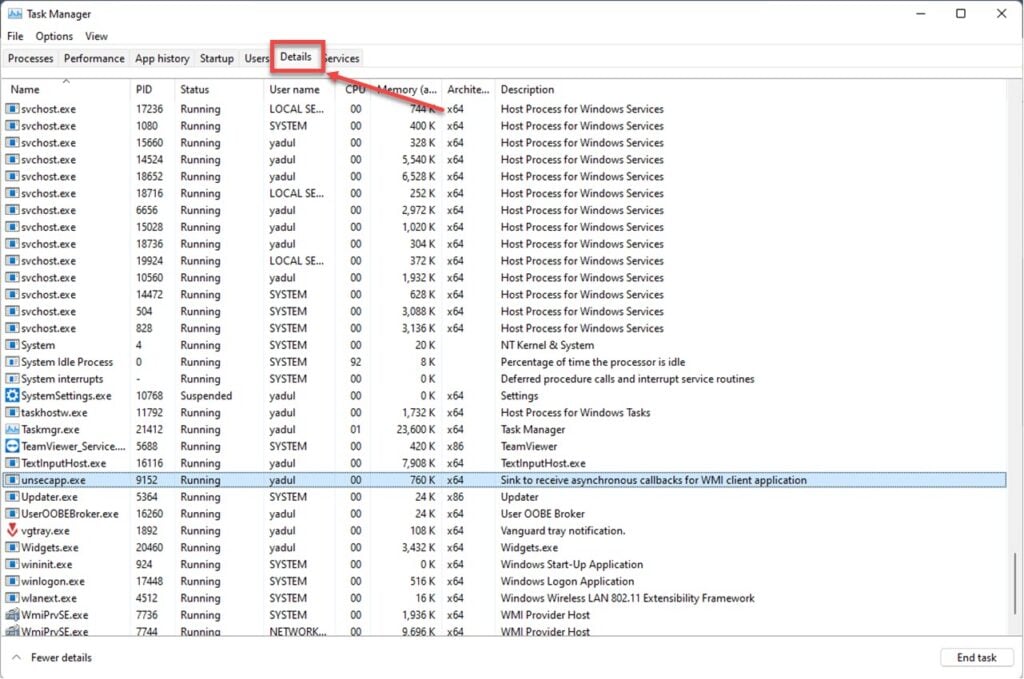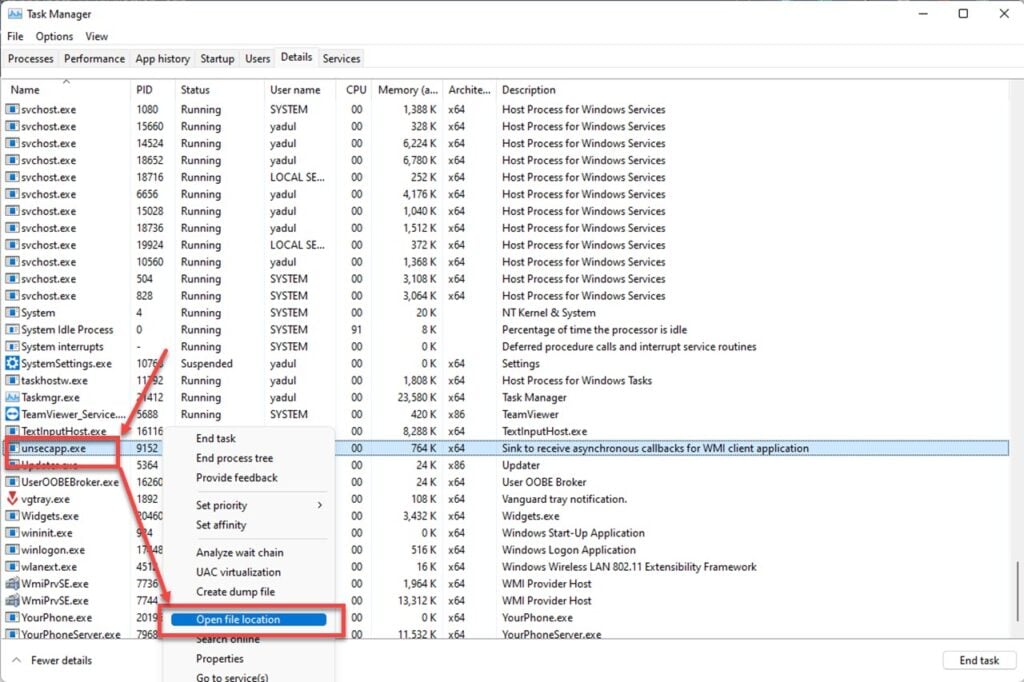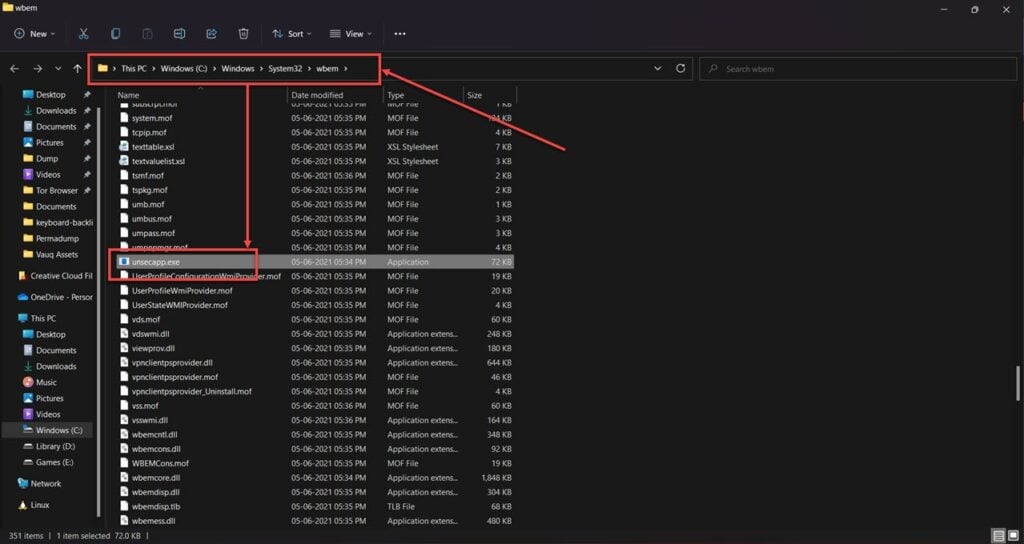Windows is nothing but a collection of all its hundreds if not thousands of smaller software components. These processes run in the background and take care of everything making sure the OS runs as expected.
However, these processes aren’t well-named, meaning seeing them run in the task manager hogging up system resources can be unnerving for everyday users.
In this article, we’re taking a look at the Unsecapp.exe process with the description “Sink to receive asynchronous callbacks for WMI client app” in the Task Manager and explaining its ins and outs.
Also read: How to install Ubuntu on Windows?
What is this process?
The “Sink to receive asynchronous callbacks for WMI client app” process, or unsecapp.exe as it’s named, is a legitimate Windows process. The executable name stands for Universal Sink to Recieve Callbacks from Applications. It plays a rather important role in how Windows responds to requests from other software that you might be using.
The sink, in this case, unsecapp.exe, is a way for any third-party software to run tasks and instructions that Windows understands. Notifications are a good example of this. If a program wants to show notifications, it will request (or callback) to Windows using the WMI Sink; hence you see the program actively running in the background.
Is Unsecapp.exe a virus? Are you safe?
Well, yes and no. Malware operators have been known to mask their processes under legitimate Windows’ processes to hide from users. The unsecapp.exe process shouldn’t be using many system resources for a sustained period.
While you can’t remove the legitimate unsecapp.exe from your computer, you can check if the process running in the taskbar is real by following these steps.
Step 1: Open the Task Manager, head over to the Details tab.

Step 2: Find the process, right-click it and select Open file location.

Step 3: If the file is C:\Windows\System32\wbem, then you’re good to go. Otherwise, it’s most likely malware.

Once you’ve confirmed that the process is malware, immediately stop it in the Task Manager and delete it from the location revealed in the third step. At this point, scanning your PC for malware using your preferred antivirus isn’t a bad idea either.
Also read: Why is my Windows key not working? 10 Fixes






